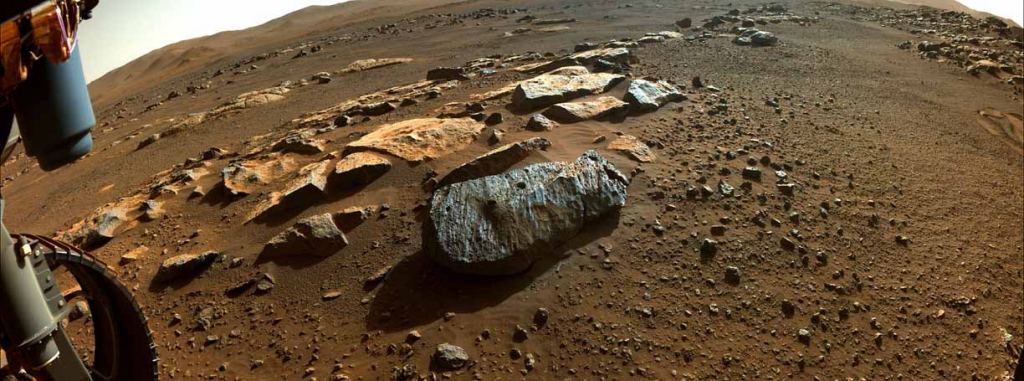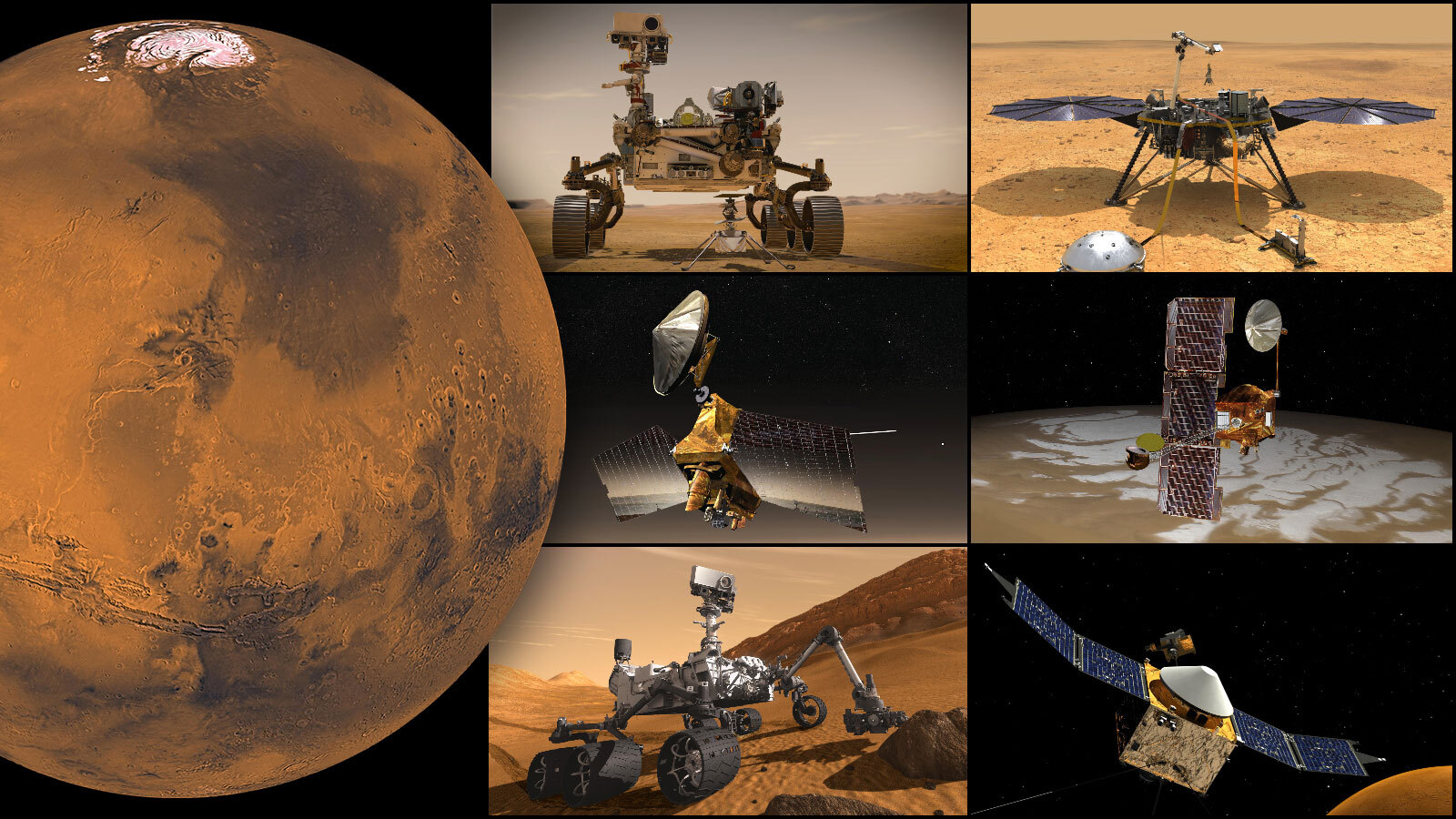Mars has become something of an international playground over the past twenty years. There are currently eleven missions from five space agencies exploring the Red Planet, a combination of orbiters, landers, and rovers. Several additional robotic missions will be leaving for Mars in the next few years, and crewed missions are planned for the 2030s. Because of this increase in traffic, NASA and other space agencies are naturally worried about “planetary protection.”
With this in mind, the National Academies of Sciences, Engineering, and Medicine (NASEM) recently released a new report that identified several criteria for future robotic missions to Mars. These would reduce these missions’ “bioburden” requirements, which are designed to prevent the unintentional contamination of the Red Planet with Earth-based organisms. Specifically, the report considers how Earth organisms would interfere with searches for indigenous life on the planet.
The report, titled “Evaluation of Bioburden Requirements for Mars Missions,” was authored by the Space Studies Board (SSB) and Board on Life Sciences, both of which are part of NASEM’s Committee on Planetary Protection (CoPP). This body is dedicated to studying all aspects of science and policy relevant to controlling biological cross-contamination, which can result from robotic spacecraft missions and human exploration.

The report was conducted in response to a NASA request (and with support provided by NASA) to identify criteria for determining suitable locations on Mars for landed robotic missions. In recognition of the increasingly diverse types of missions being mounted (not to mention increasingly diverse scientific objectives), these locations would need to satisfy less stringent bioburden requirements than is currently called for with NASA policy.
Planetary Protection
Since 1982, NASA has maintained protocols of varying stringency for reducing a spacecraft’s bioburden. These range from the partial sterilization of components and “clean room” assembly to bioassay monitoring and documentation of potential biomes. These “planetary protection” measures are intended to reduce the risks to indigenous life while simultaneously preserving the prospect of achieving important scientific goals.
Missions to Mars are identified as a particularly important destination when it comes to planetary protection, as so many efforts are currently dedicated to searching for evidence of extraterrestrial life there. As Amanda Hendrix, a senior scientist at the Planetary Science Institute (PSI) – and the co-chair of the committee that wrote the report – explained in a NASEM press release:
“Changes to planetary protection policies should be considered in the context of how much science has learned in recent years about Mars. Because of this increased knowledge, NASA now has an opportunity to take a more nuanced and, in some cases, more permissive approach to reducing bioburden requirements for certain missions. However, caution is still warranted because we have a lot to learn about Mars, and about terrestrial life’s survivability.”

“Planetary protection measures should be aimed at reducing risks while preserving, to the greatest extent reasonable, the prospect that important scientific goals can be realized,” added committee co-chair Joseph Alexander. Now the head of Alexander Space Policy Consultants (a private science and technology policy firm), Alexander was previously a Senior Program Officer with the National Academies SSB (until 2013).
The report also recognizes the need to review planetary protection protocols, given the recent surge of interest in Mars. In addition to space agencies other than NASA or Roscosmos sending missions to Mars, there is also the growing interest from the commercial space sector. As indicated in the report:
“Over the last decade, the number of national space agencies planning, participating in, and undertaking missions to Mars has increased, and private-sector enterprises are engaged in activities to enable commercial missions to Mars. The nature of missions to Mars is also evolving to feature more diversity and purposes and technologies. As missions to Mars increase and diversify, national and international processes for developing planetary protection measures recognize the need to consider the interest of scientific discovery, commercial activity, and human exploration.”
Key Findings
Overall, the committee report offered nine specific findings in response to NASA’s request. Among them, the report stressed the importance of discovering and preserving evidence of indigenous life on Mars. For that to happen, contamination must be avoided, as terrestrial organisms could proliferate on Mars, threatening indigenous life forms and disrupting the discovery process.

“The discovery of indigenous life on Mars would be a signal event in the development of human knowledge, with widespread impact and implications,” they state. “Preserving unambiguous separation or distinguishability of terrestrial organisms from indigenous Martian organisms, by application of planetary protection protocols, or by other scientifically accepted means, is essential to realizing NASA “s solar system exploration goals and addressing profound questions that have long preoccupied humans.”
Finding evidence of such life has always been a monumental challenge for scientists. Ever since the Mariner 4 probe flew past Mars in 1965, the scientific consensus has been that life could not survive on Mars. The lack of a magnetic field and thin atmosphere mean that Mars is exposed to high amounts of ultraviolet (UV) radiation and cosmic rays compared to Earth. This raises the second finding of the report, which is that the Martian environment “makes the survival, growth, and proliferation of terrestrial organisms” an unlikely source of contamination.
The authors also conclude that since many parts of the Martian subsurface down to a depth of approximately 1 m (3.3 feet) have no water ice, they would also be a poor environment for terrestrial organisms to proliferate. As such, they recommend that bioburden requirements be relaxed for future robotic missions to Mars that are not destined for these environments, locations not lower than 1 m beneath the surface, designated “buffer zones” around subsurface access points, or other sites of astrobiological interest.
However, that does not rule out the possibility that viable terrestrial organisms could survive in certain subsurface environments, such as cave systems. These environments are considered among the most potentially habitable environments on Mars, which means that they might already host “extant or extinct indigenous Martian organisms.” However, they admit that more study is needed to address “habitat connectivity” and “brine transport” to determine if contamination could spread in icy subsurface environments – i.e., permafrost, ice sheets, and polar ice.

Locations with concentrations of water ice are considered ideal for future landing sites, hence why more information is needed to assess the potential for terrestrial organisms to spread from one potential habitat to another. To avoid the possibility of contaminating subsurface access points, a mission with relaxed bioburdens would need to land at a distance from sites of astrobiological interest. These “buffer zones,” they claim, are to be determined based on “wind conditions for the location and season” as well as radiation exposure.
Conclusions
In the end, the author recommends that pre-launch cleanliness provisions and that equipment decontamination (such as with drill bits and other tools) be maintained. They also suggest that future missions be designed to take advantage of the effects of naturally sterilizing UV and cosmic radiation. Of course, they acknowledge that a lot of the information presented throughout the report is not yet well-constrained, as is the effectiveness of in-situ sterilization.
As a result, they advise that more research is necessary, especially where subsurface habitats are involved. This includes better estimates of how connected these habitats are, the likelihood of subsurface brine and ice, and improved knowledge of subsurface access points. All of these are needed so that scientists can make a better assessment of the potential for contamination.
For decades, scientists have considered Mars the best place for finding extraterrestrial life, and for a good reason. Beyond Earth, it is the most habitable body in our Solar System (by our standards) and has some noted similarities with Earth. In the coming years, multiple robotic explorers and crewed missions will join in the search for life on Mars, clues to Mars’ past, and how the planet evolved to become what it is today. The answers they find will also shed light on how planet Earth and life as we know it came to be.
Further Reading: The National Academies of Sciences, Engineering, and Medicine

